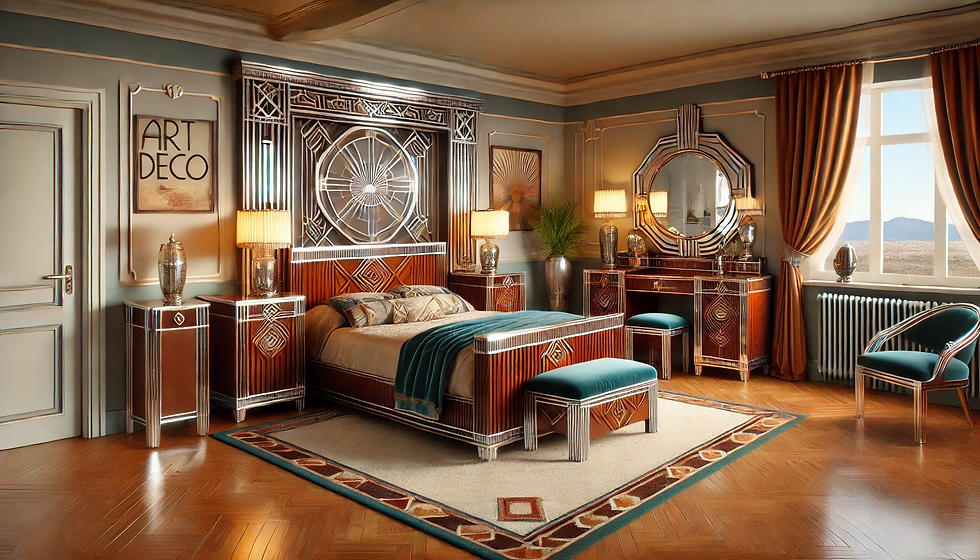How Sustainable Handmade Furniture Became a Timeless, Eco-Conscious Choice
- Staff Desk
- Jun 3
- 4 min read

Handmade Furniture
In an era defined by climate urgency and mindful consumption, handmade furniture has reclaimed relevance as a practical, elegant, and eco-conscious investment. Discerning homeowners are turning away from the fleeting allure of flat-pack pieces and gravitating toward artisan craftsmanship rooted in sustainability. These choices aren’t driven by trends alone—they reflect a deeper commitment to the planet and a desire to live with intention. From the choice of raw materials to the lifecycle of each item, handmade furniture tells a story of thoughtful creation, not careless production.
Conscious Consumption Drives the Shift Toward Handmade Furnishings
Today’s consumers ask harder questions: Who made this? What’s it made of? Will it last? Mass production rarely offers clear answers. Handmade metal furniture, by contrast, provides transparency, from traceable materials to meeting the maker. This connection builds trust and makes each purchase feel purposeful.
A Response to Mass-Produced Waste
Global waste from furniture production has reached staggering levels. Cheap adhesives, particleboard, and synthetic coatings commonly found in mass-market goods contribute to off-gassing and landfill buildup. Handmade metal furniture counters that with durable construction and timeless design. While mass-produced items often degrade in just a few years, quality pieces crafted by hand can be passed down or repurposed. The inherent longevity of these designs makes them not only sustainable but financially sensible in the long term.
Slower Production, Smarter Materials
Handmade artisans prioritize quality over quantity. Their work moves at a measured pace, allowing careful selection of materials that meet environmental and performance standards. Reclaimed metals, low-VOC finishes, and minimal-waste production processes are all hallmarks of ethical craftsmanship. These makers understand the full lifecycle of their materials—from sourcing to fabrication to end-of-life recycling. It’s a far cry from industrial facilities that churn out identical pieces with little regard for ecological impact.
The Environmental Impact of Durable Design
Every piece of furniture leaves a footprint — from materials and energy to transport and packaging. Handmade furniture reduces that impact by avoiding harmful processes and prioritizing longevity. Built to last for decades, these pieces cut down on the need for constant replacement.
The Carbon Cost of Replacement
Replacing a table three times in 15 years is far more damaging than investing in one built to last. This is especially true for outdoor furniture exposed to harsh elements. Hand-forged metal designs resist rot, pests, and moisture far better than wood or plastic alternatives. With proper care, they can outlast trends and weather patterns alike. The lower replacement rate directly correlates to reduced carbon emissions and less waste.
Compact Supply Chains, Local Craftsmanship
Another key environmental benefit comes from sourcing furniture locally. Most handmade metal furniture comes from local workshops, not distant factories. Shorter supply chains mean lower transportation emissions and less packaging waste. Supporting these businesses also bolsters local economies and preserves traditional metalworking techniques that are increasingly rare in today’s market.
Aesthetic Longevity Meets Ethical Appeal
Sustainability matters, but so does design. With clean lines and industrial textures, handmade metal furniture fits effortlessly into styles from modernist to rustic. Unlike fleeting trends, these timeless pieces balance form and function — offering lasting impact and everyday utility.
Customization Without Waste
One advantage of handmade work is customization. Instead of compromising with generic sizes or styles, clients can specify dimensions, finishes, and features that suit their exact space. This tailored approach reduces the need for compromise purchases that often end up discarded. Additionally, many artisans use offcuts and surplus metal in creative ways, ensuring that even scrap becomes art rather than landfill.
A Personal Connection to Craft
When a homeowner selects a handmade piece, they’re not just buying a product—they’re buying a relationship. The pride embedded in artisan craftsmanship becomes part of the home’s story. These items often spark conversations and hold sentimental value, making them less likely to be replaced. That emotional bond further supports the goal of sustainable ownership.
The Role of Metal in Sustainable Design Philosophy
Wood may be the classic artisan medium, but responsibly used metal offers key advantages. It’s recyclable, durable, and ideal for both indoor and outdoor use. With eco-safe finishes, sustainable metal furniture resists weathering and requires less upkeep than wood.
Recyclability and Circularity
Metal is infinitely recyclable without degradation of quality. A discarded steel rod or aluminum panel can be reborn into something beautiful with minimal energy compared to virgin extraction. This circular economy model aligns perfectly with sustainability goals and helps conserve natural resources.
Industrial Elegance Meets Natural Harmony
Today’s metal artisans are redefining what “industrial” means. Through techniques like hand-brushing, patination, and sculptural bending, they give metal an organic presence that feels at home in modern eco-conscious spaces. These designs can coexist peacefully with wood, stone, and glass to create layered environments that balance aesthetics with responsibility.
Why the Future Looks Handmade
The return to handmade furniture isn’t nostalgia—it’s a strategic evolution in how we design our spaces and interact with the planet. Informed consumers are rejecting disposable goods in favor of artistry, intention, and longevity. They see value not in a logo, but in a weld joint, a rivet, a texture that tells a human story. Each handmade item becomes a reflection of values: sustainability, individuality, and quality over quantity.
As the environmental consequences of unchecked manufacturing become more visible, choosing sustainable handmade furniture is no longer a niche act—it’s a necessity. And as more makers respond to this demand, we’ll see continued innovation in material reuse, design intelligence, and local production. The homes of the future will be built not just with energy efficiency in mind, but with furniture that respects the same ethos.



Comments